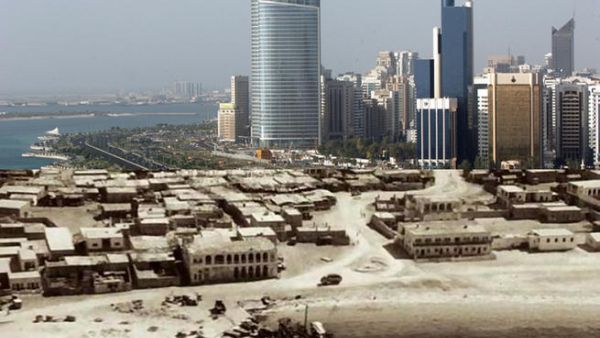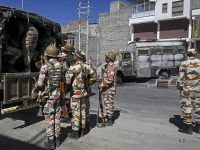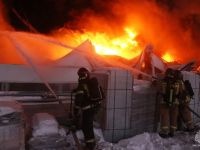With almost 100 billion barrels of proven crude oil reserves (six per cent of global proven reserves), Abu Dhabi accounts for 94 per cent of the UAE’s oil production, with Dubai, Sharjah and the other emirates the remaining six per cent.
The UAE is unique in the Arab world because it never nationalised foreign oil concessions or expropriated their assets, as did Iraq, Libya, Yemen and even Kuwait. In fact, Abu Dhabi’s flagship operating company Adnoc forged highly successful partnerships with international oil and gas majors that enabled it to import state of the art management and technological expertise in oil drilling, production, pipeline, refining and petrochemicals. As the host of Irena and Masdar City, Abu Dhabi is the global hub of renewable energy, the next frontier in world energy. Abu Dhabi is increasingly also a “gas superpower” with an estimated four per cent of global proven reserves that will last for more than a 100 years at current production levels.
Adnoc is among the best managed, most technologically capable state owned oil companies in the Middle East, in the same global league as Saudi Aramco and Kuwait’s KPC. Adnoc subsidiaries span the entire spectrum of upstream and downstream oil and gas businesses with a number of joint ventures with global supermajors. ADMA — OPCO, that produces offshore oil, has ventures with BP, Total and Japan’s Jodco. The Abu Dhabi Company for Onshore Oil Company (Adco) is a Adnoc joint venture with an international consortium that includes Exxon Mobil, Total, BP, Shell and Partex. Zadco, that operates Abu Dhabi’s offshore Upper Zakum oilfield, is owned by 60 per cent by Adnoc with Exxon Mobil as the foreign joint venture partner.
Abu Dhabi’s sovereign wealth funds and utilities have also created innovative new companies that are now regional and global oil and gas producers in their own right, such as Mubadala Petroleum and Taqa (Abu Dhabi National Energy Company) with assets in oilfields from Canada to the North Sea, Thailand to North Africa.
Abu Dhabi’s International Petroleum Investment Company (Ipic) owns a twenty five per cent stake in Austria’s largest oil and gas major OMV as well as strategic stakes in Egypt’s Suez Med pipeline, Japanese refiner Cosmo Oil, Spanish power and Pakistan’s storage tank assets. Ipic and Taqa have even issued billions of dollars of long term corporate debt in the global bond/sukuk market.
Abu Dhabi is also a strategic investor in the Dolphin Project that imports Qatari gas via seaborne pipeline to Abu Dhabi and then transports it to Oman. Ipic has also invested in a $8 billion pipeline and refinery to transport onshore Abu Dhabi gas to Fujairah to bypass the congested sea lines of the geopolitically high risk tanker chokepoint Straits of Hormuz.
Oil and gas have catapulted Abu Dhabi into one of the wealthiest emirates in the Arab world and financed the rise of such global financial institutions as the Abu Dhabi Investment Authority (Adia), the Middle East’s largest foreign investor (and global second to Norway’s State Petroleum Fund). Abu Dhabi is estimated to earn as much from tis foreign investment income and capital gains as from the export of crude oil and natural gas. The Abu Dhabi government is interested in diversifying its economic and industrial base beyond oil and gas sales, as outlined in the emirate’s Economic Vision 2030 document.
This economic development vision now encompasses specific targets in sectors as varied as tourism and medical services, aerospace to aluminum smelting, port management to aviation, media to financial services. The Vision 2013 milestones necessitates at least $50 billion in new projects and government infrastructure development in Abu Dhabi, Al Ain, Liwa, Ruwais, Musssafah etc. Projects such as the Salam Street Tunnel to Port Khalifa to Etihad Airways, Aldar to the Kizad industrial zone are just the tip of the iceberg in the emirates economic growth and sectors diversifications strategy.
Foreign investors are eager to participate in Abu Dhabi’s economic miracle. For instance, the bonds and sukuk issued by Abu Dhabi’s government owned banks (NBAD, ADCB, First Gulf and UNB) are eagerly purchased by global pension funds and insurance companies. Al Noor General Hospital managed to float one third of its shares on the London Stock Exchange in a highly successful IPO. Abu Dhabi quasi sovereign companies such as Ipic, Adwea and Taqa have issued bonds at some of the lowest credit spreads in the Arab world, thanks to the emirates new role as the safe haven investment capital of the Arab world.
The Industrial City of Abu Dhabi (Icad) will be a catalyst for its future economic development, as well industrial joint ventures such as Mubadala’s venture with General Electric. New ports, industrial cities, expanded airports, the vas tourism complexes in Yas Island and Saadiyat, new museums, world class clinics (Mayo, Cleveland etc) and universities (NYU Abu Dhabi, Sorbonne will all contribute to the rise of the next Middle East cosmopolis after Dubai and Beirut. Oil and gas wealth have created a twenty first century high tech industrial city with global credentials in Abu Dhabi.
By Sarie Khaled
The writer is a Dubai-based research analyst in energy and GCC economics.








